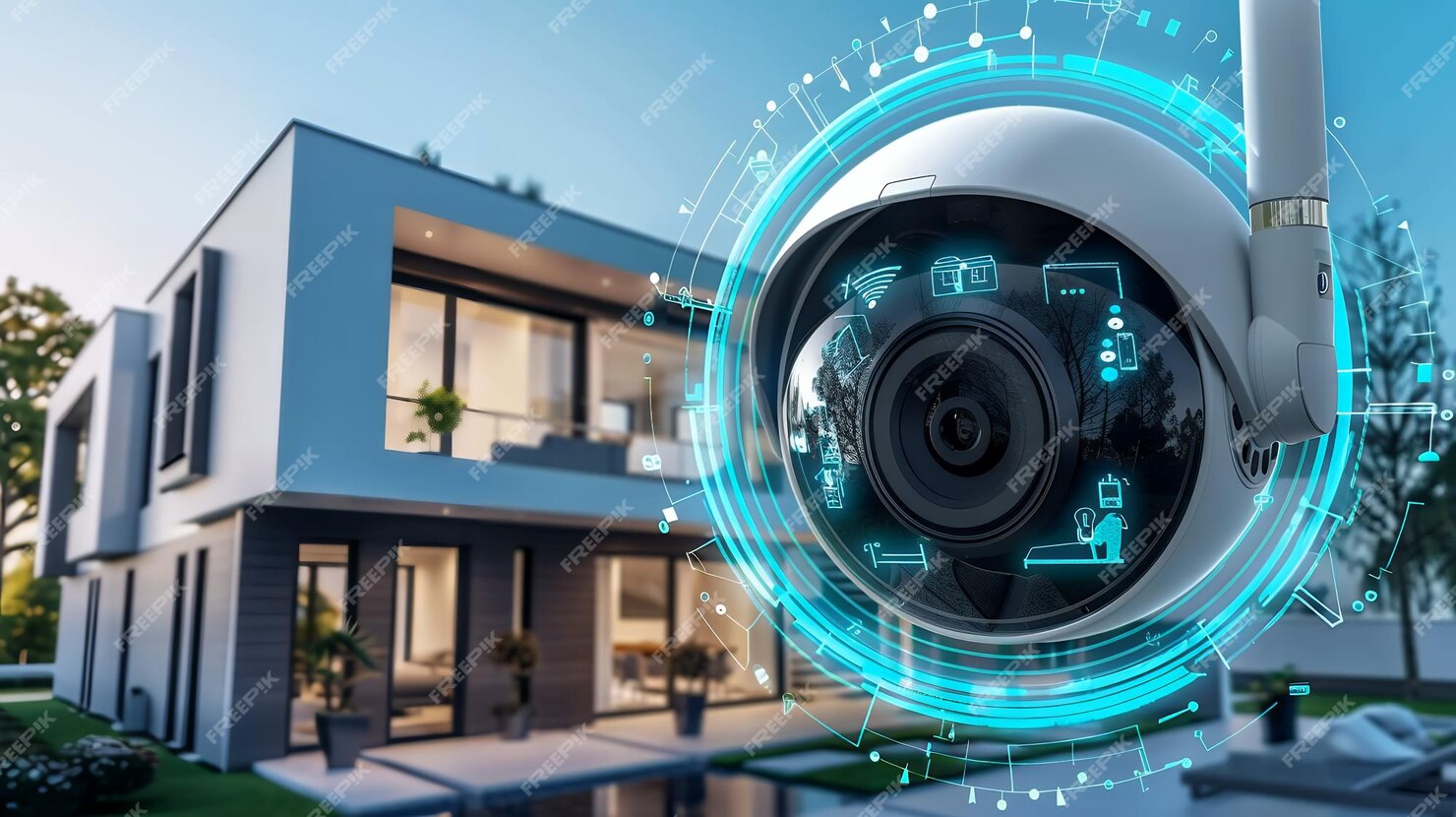Security concerns have become a top priority for homeowners and businesses alike. With the rise of technology, Smart Security Systems have revolutionized the way people protect their properties. These systems integrate artificial intelligence (AI) to enhance surveillance, detect potential threats, and prevent break-ins before they happen.

AI-powered Smart Security Systems use advanced algorithms and machine learning to analyze patterns and detect suspicious activities. This proactive approach ensures faster response times and reduces false alarms. In this article, we will explore how AI-driven Smart Security Systems work and their effectiveness in preventing break-ins.
AI-Powered Surveillance and Monitoring
Real-Time Threat Detection
Traditional security cameras rely on manual monitoring, which can be inefficient and prone to human error. AI-powered Smart Security Systems use real-time threat detection to identify unusual behavior and unauthorized access. These systems analyze video feeds and alert homeowners or security personnel instantly.
By implementing facial recognition and motion detection, Smart Security Systems can differentiate between regular visitors and potential intruders. This reduces false alarms triggered by pets or environmental factors. AI’s ability to learn from past incidents makes security surveillance more efficient and reliable.
Automated Alerts and Notifications
AI-enhanced Smart Security Systems provide instant alerts when a potential threat is detected. Homeowners receive real-time notifications on their smartphones, allowing them to take immediate action. This rapid response time can prevent break-ins before they occur.
These systems can also integrate with emergency services, automatically notifying authorities if a break-in is confirmed. By eliminating human response delays, Smart Security Systems enhance safety and minimize potential damages caused by intruders.
Advanced Motion Detection and Facial Recognition
Differentiating Between Threats
One of the major advantages of AI-powered Smart Security Systems is their ability to distinguish between real threats and harmless movements. Traditional motion sensors often trigger alarms for minor disturbances like swaying trees or passing animals. AI-based security technology minimizes these false alarms by analyzing movement patterns.
Facial recognition technology further improves security by identifying known visitors and alerting homeowners about unfamiliar faces. This feature allows Smart Security Systems to detect potential intruders while avoiding unnecessary alerts for friends, family, or delivery personnel.
Tracking Suspicious Behavior
AI-driven Smart Security Systems continuously analyze behavior patterns to detect suspicious activities. For example, if an individual loiters near a property for an unusual amount of time, the system flags this behavior and notifies the owner. This proactive approach helps prevent break-ins before they happen.
Additionally, AI-powered security cameras can store data on previous incidents and use this information to improve threat detection. Over time, Smart Security Systems become more effective in identifying potential risks, ensuring better protection.
Smart Lock Integration and Automated Access Control
AI-Enabled Smart Locks
Modern Smart Security Systems integrate with AI-powered smart locks, allowing homeowners to control access remotely. AI can recognize authorized users through facial recognition or biometric authentication, ensuring that only trusted individuals can enter the premises.
These smart locks can also generate temporary access codes for guests or service providers. If an unauthorized person attempts to enter, the system locks down automatically and sends alerts. This seamless integration enhances home security and prevents break-ins.
Remote Access and Control
AI-powered Smart Security Systems enable remote access and control via mobile apps. Homeowners can monitor live video feeds, check door lock status, and grant or deny access from anywhere. This feature is especially useful for travelers who want to keep an eye on their property.
Moreover, AI-powered automation allows Smart Security Systems to learn user preferences and create security routines. For example, the system can automatically lock doors at night or activate motion sensors when the house is unoccupied. These capabilities make security more efficient and user-friendly.
AI in Predictive Security and Crime Prevention
Data-Driven Crime Prediction
AI-driven Smart Security use predictive analytics to identify potential security threats. By analyzing past incidents, crime trends, and neighborhood data, these systems can anticipate risks and enhance protection measures. Predictive security allows homeowners to take preventive actions before an actual break-in occurs.
For instance, if crime rates increase in a particular area, the system may suggest additional security measures, such as reinforcing locks or increasing surveillance coverage. AI’s ability to process vast amounts of data ensures proactive crime prevention.
Enhancing Law Enforcement Collaboration
AI-powered Smart Security can assist law enforcement by providing real-time data and evidence. Security footage with AI-enhanced facial recognition helps authorities identify suspects more efficiently. This collaboration between AI and law enforcement improves crime resolution rates and enhances overall community safety.
Additionally, AI-powered databases can store and cross-reference information about repeat offenders or suspicious activities, helping security professionals respond more effectively. Smart Security act as a deterrent against crime and contribute to a safer environment.
Conclusion
The integration of AI in Smart Security Systems has transformed the way people protect their homes and businesses. By leveraging real-time monitoring, motion detection, facial recognition, and predictive analytics, these systems prevent break-ins before they happen. AI-powered Smart Security Systems provide faster response times, reduce false alarms, and enhance overall security.
With continuous advancements in AI technology, Smart Security will become even more intelligent and efficient in safeguarding properties. Investing in AI-driven security solutions ensures peace of mind and a proactive approach to crime prevention. As security threats evolve, so do the capabilities of Smart Security, making them an essential part of modern safety measures.